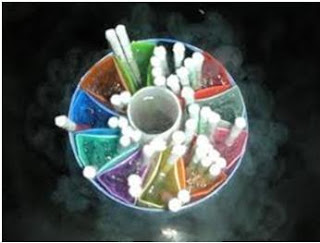Success Rates of Frozen Embryo Transfer, cryo shipping, vitrification process:
A short history lesson of cryoshipping and vitrification process.
 |
| Vitrified Human Blastocysts and Surrogacy pregnancy |
The first reported pregnancy in humans from frozen embryos was in 1983.Research continues in this area and human embryo freezing and thawing protocols have improved tremendously over the past 25 years.
What is the difference between slow freezing and vitrification?
Patients who undergo IVF may have several eggs collected. The eggs are then fertilized with a sperm and checked for fertilization. Fertilized eggs are called embryos. A patient may have multiple high quality embryos eligible for embryo transfer back to the uterus. A certain number of embryos are chosen for embryo transfer, and the surplus of high quality embryos can be cryopreserved for future use.
 |
| Blastocyst & Embryo Freezing in IVF, Vitrification & Cryopreservation |
When patients decide to use their cryopreserved embryos to try for a pregnancy, the embryos are removed from the liquid nitrogen, warmed and run through solutions of media to remove the cryoprotectant and rehydrate the cells with water. During cryopreservation, the formation of intracellular ice crystals can damage the cells of the embryo, decreasing future viability. Therefore, new methods were developed to improve cryopreservation techniques.
Vitrification-hook Recent technical advancement in the field of cryobiology has opened up various options for freezing gametes and embryos at different developmental stages. The tendency of the IVF world to switch over to natural cycle IVF and to elective single-embryo transfer has put cryotechnology in the forefront of IVF. Vitrification method is gaining popularity as the method of choice for gamete/embryo cryopreservation.
Vitrification is a new process for cryopreserving embryos. Through vitrification, the water molecules in an embryo are removed and replaced with a higher concentration of cryoprotectant than in the slow freeze method. The embryos are then plunged directly into liquid nitrogen. This drastic (-12,000 degrees Celsius per minute) freezing creates a glass transition temperature, commonly called a “glass” state, and the embryos are vitrified. This quick freezing reduces the chance for intercellular ice crystals to be formed, thus decreasing the degeneration of cells upon thawing for embryo transfer.
 Many studies show survival rates of vitrified embryos to be far higher than survival rates of slow freeze embryos.
Many studies show survival rates of vitrified embryos to be far higher than survival rates of slow freeze embryos. |
| Vitrified Blastocysts |
Amazing blog. Thanks for sharing this wonderful blog with us. It's really very informative. Keep doing the good work.
ReplyDeleteEgg freezing in Punjab
Very informative blog
ReplyDeleteThe best thing about your sharing and posting is that you always provide content that is helpful for both the newbie and experts.Best IVF Centre in Delhi.
ivf cost in Nepal nice Blog
ReplyDeleteThanks for sharing this post. To get insights on infertility treatment, check our blog on Surrogacy Centre in Punjab.
ReplyDeleteFor expert Fertility Preservation guidance in Surat, consult the IVF specialist at Devaki IVF Centre, a leading IVF center in Surat.
ReplyDelete